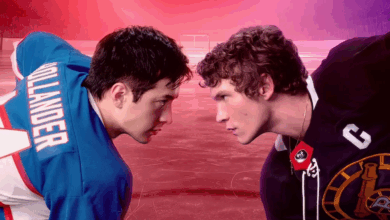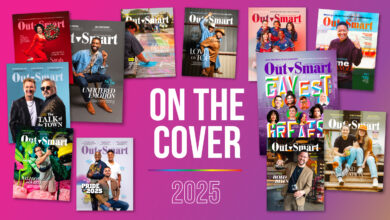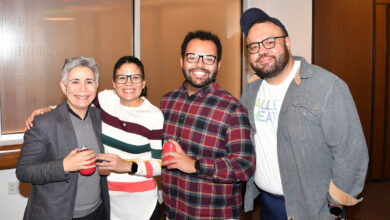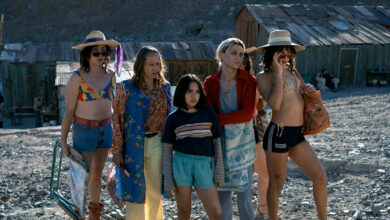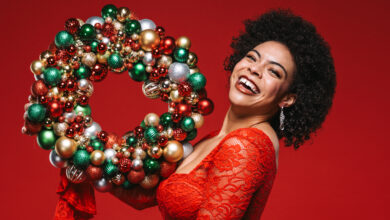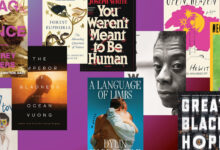Houston’s Diverse Airport Art
Houston’s Civic Art Program brings LGBTQ representation.

Houston’s Civic Art Program is partnering with the Houston Arts Alliance to welcome new art installations to George Bush Intercontinental Airport as it undergoes renovations. Many of the new installations will be featured in the new Mickey Leland International Terminal to welcome international travelers with art that best represents the Bayou City.
According to Civic Art Program manager Theresa Escobedo, this boom in public art is thanks to a mayoral administration that is particularly supportive of the arts and its role in massive civic projects such as the IAH expansion, with construction across the city generating funds for the civic art program.
When Escobedo began in her position in 2020, the Program did a survey of the artists included in the City’s collection of 667 pieces. They discovered that about 62 percent of the art was created by white men, while only about 2 percent was by women of color. This motivated Escobedo to begin commissioning art that is more representative of Houston’s diverse population.
In pursuit of this, Grace Zuniga, director of civic art and design for the Houston Arts Alliance, teamed up with Escobedo to select a panel that was representative of the diverse range of perspectives and experiences in Houston. This panel then went on to commission artists by issuing an open call for artworks that will be positioned around the airport, with the majority being placed in the new Mickey Leland International Terminal. Their internal focus was on selecting a diversity of artists who could tell the story of Houston, Escobedo says. What came together from that call had a synergy that couldn’t have been planned. “It was as if we curated them,” she adds. Out of the artworks commissioned, 50 percent are by LGBTQ artists.

“[Expanding the diversity of the City’s commissioned art] is not a fad for us,” Escobedo notes. “We are interested in creating a collection that represents and tells the story of our city, and these artists are absolutely central to that effort.”
At the IAH Terminal B Skyway, Data Stream by artists Billy Bacaam and Alex Ramos is coming together. The piece, a triptych with LED ropes that are programmed to create a matrix similar to a news ticker, took its influence from the airport itself. Ramos says that the piece was informed by early research highlighting economic disparities in the city, though they tried to focus on the city as a whole and avoid making a political statement.
Ramos says they originally focused on airport travelers as viewers, but they soon realized that their core viewers would be the employees working in the airport on a daily basis—who the artists developed relationships with while they were installing the piece.
“Actually, one of the gentlemen we met that does maintenance on the train was retiring, so our goal was to finish the piece kind of as a present to him,” Ramos explains. “It was really beautiful to build these relationships at the airport and just give people an opportunity to pause for a moment, because they had become so desensitized to these spaces.”
Gay artist Gerardo Rosales creates art that often draws on autobiographical elements with a political focus, such as his previous work denouncing police brutality against the LGBTQ community in Venezuela. His pieces are also inspired by the nature and landscape of Houston, which he says evokes memories of his native Venezuela.

“From there, I [plan] my design with the intention to create something really colorful and welcoming that will attract everyone—from adults to children—with imagery that is very colorful and easy to access,” Rosales explains.
For interdisciplinary queer artist Lovie Olivia, the history of Gee’s Bend quilts sparked the idea of a community quilt installation in the new international terminal at one of the gates. She envisions it as a multicolored piece that pulls its colors from the city’s turquoise and muddy-green bayous as well as the vibrant orange and blue Houston Astros logo, with a pattern influenced by Santa Fe quilts.
Olivia also finds motifs and iconography from the many cultures of Houston, while using gold string to visually interlock these community symbols together to represent Houstonians like her who are multiracial and multiethnic.
“I’ve now collected about 80 quilts [from local thrift stores] so that I can actually use them as resource materials for the airport painting that I’m doing, Olivia says. “I think the fact that this oversized quilt is so large adds to this sort of covering and comforting ability [that quilts naturally have].”

The strong showing of LGBTQ artists in the City’s airport art initiative leads Jake Margolin to describe the airport commissions as his “dream queer art show.” Together with his partner, Nick Vaughan, he’s creating a piece focused on Montrose that draws from a number of photographs taken throughout the neighborhood. The installation will also reflect their work and research on hidden queer histories across all 50 states.
“It’s largely about reclaiming agency and presence in a history that has actively erased queer people from the record,” Vaughan explains. “When you look at the landscape of Houston, the degree to which it has been shaped by queer culture is astonishing, right?”
Olivia emphasizes the importance of exploring Houston’s queer Black histories—from her own time at the High School for the Performing and Visual Arts in the heart of Montrose to her work at Project Row Houses in Third Ward. “I’m always digging into the African American queer history of Houston,” Olivia emphasizes. “I’m interested in the boundaries and intersections of communities.”
She does this by celebrating Black luminaries like Pat Parker, Barbara Jordan, and other significant figures. As a child, Olivia recalls hearing about Congressman Mickey Leland dying in a plane crash during a humanitarian visit to Africa.
“I now have an opportunity to celebrate his history in the airport, and sort of dig into that childhood memory when it was so devastating to hear that someone so generous had just perished,” Olivia says. “So it’s all that sort of interweaving. I’ve created a comforter.”
For more info, visit houstonartsalliance.com.


